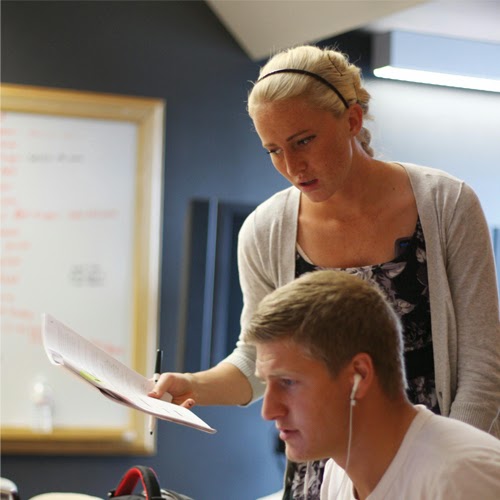 |
| USU students Brooke Leavitt, standing, and Zach Waxler edit content to post for CommStrong, a simulated crisis situation. Photo Credit: Riley Densley photo |
While most of the crisis situation centered around an unexpected bombing at a public event, the day started with a report of a Bigfoot being captured. You can read the simulated report below.
SIMULATION: Bigfoot caught in Logan Canyon
By Tmera Bradley
Logan Animal Control caught Sasquatch in Logan Canyon earlier today.
Utah State University student Brad Larsen said he was taking a walk in the mountains when he saw Bigfoot, which he described as a “6-foot-5 hairy beast.” He shot a video and posted it online, and also notified the police.
Sean Davis from Animal Control said they arrived on the scene and tranquilized the animal after a struggle.
“This is indeed a creature that no one has ever seen before,” Davis said. “Now that we’ve caught him, this is the most evidence we’ve ever had.”
Davis said Bigfoot is being transported to Hogle Zoo for more testing and public viewing.
We reached out to Matthew D. LaPlante, assistant professor of journalism at USU to explain how the Bigfoot report was used in the simulation and he was kind enough to reply:
We used Bigfoot as a red herring, of sorts. The script called for a sighting — and then later a reported capture. A video was sent to several news teams along with offers of interviews with spotters and capturers. Against the totality of the "news" thrown at the students throughout the day, the expectation was that many would bite early and then back away from that story as the day wore on and bigger news prevailed, and that's indeed what happened.
You can read the original article, "Bombs, blood and Bigfoot" that tipped us off to this event, but it is scant on how Bigfoot was incorporated, despite using Bigfoot in the headline.
You can also read the simulated Bigfoot news article that was distributed to the students here.


